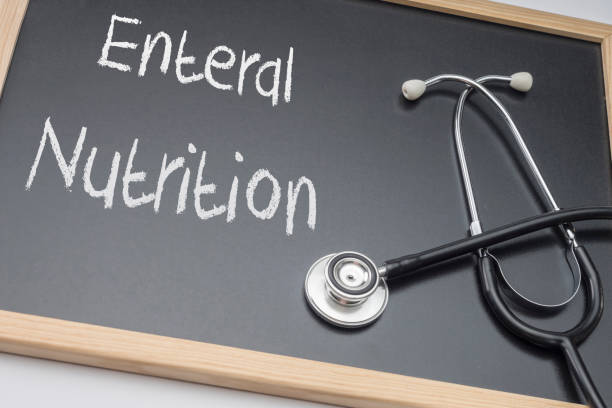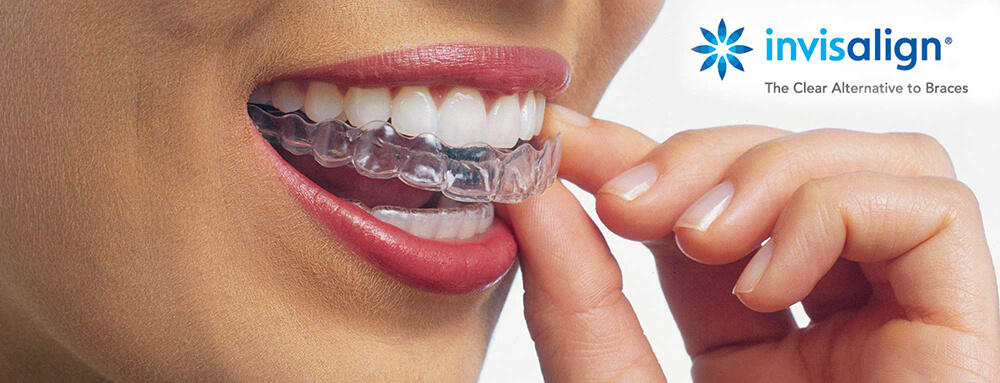Nutritional support (NS) for children with oncological and hematological diseases, for whom classical oral nutrition is insufficient or impossible, makes it possible to provide the body with the necessary amount of energy and plastic material. Depending on the method of delivery of nutritional components, two types of NPs are distinguished – parenteral (intravenous) and enteral nutrition.
Today we will talk about what it is – enteral nutrition, in what cases it is prescribed and how it is carried out.
What Is Enteral Nutrition
Enteral nutrition (EN) is a clinical nutrition technique in which nutrients the body needs are introduced through a tube into the stomach or small intestine. Such nutritional support may be indicated to a child when natural oral nutrition is not possible or insufficient.
Enteral nutrition is considered the preferred method of nutritional support for a number of reasons:
- EN is more physiological and allows you to maintain the structure and functionality of the intestine.
- This technique of NP allows to reduce the hypermetabolic response to damage, translocation of bacteria and toxins from the intestine.
- Enteral nutrition is more economical than parenteral nutrition.
- Enteral nutrition mixtures contain all the components necessary for a child, since their composition is selected individually, taking into account the condition and needs of a particular patient.
Indications And Contraindications For Enteral Nutrition
The main indication for prescribing therapeutic enteral nutrition to a child with oncological and hematological diseases is the inability to provide the body with all the necessary substances in a natural oral way, including using specialized nutritional mixtures using the sip method (oral intake of the mixture in small sips through a tube).
Enteral nutrition for patients can be carried out in the presence of at least partial function of the gastrointestinal tract and the possibility of installing a probe or stoma (we will discuss what each of the methods of introducing EN is described below).
However, in some cases, EP may not be possible for a number of reasons. The list of contraindications for prescribing enteral nutrition to cancer patients includes:
- severe structural and functional disorders of the gastrointestinal tract (intestinal ischemia, intestinal obstruction, etc.);
- intractable severe nausea and vomiting;
- hypoxia (paO2 less than 50 mm Hg);
- respiratory and metabolic acidosis (pHart. less than 7.2 mmol / liter, paCO2 more than 70 mm Hg);
- intolerance to individual components of the enteral mixture.
- To date, the absence of auscultated peristalsis is not a contraindication for enteral nutrition.
How Enteral Nutrition Is Administered To Children With Oncological And Hematological Diseases
Features of the child’s EP are largely determined by the method of access to the digestive tract and the place where the nutrient mixture enters. Based on these parameters, 2 types of enteral nutrition are distinguished:
1. Probe enteral nutrition , in which access is carried out while maintaining the anatomical integrity of the gastrointestinal tract. In this case, the delivery of nutritional formula for enteral nutrition can occur in the following ways:
- The nasogastric tube is inserted into the nasal opening, passes through the throat, esophagus and enters directly into the stomach.
- The nasojejunal probe follows the same path but reaches the jejunum.
- Nasogastric and nasojejunal probes exit through the nasal opening and are fixed to the skin with adhesive tape. On the one hand, this method is associated with a lower risk of infectious complications, since the integrity of the gastrointestinal tract in this case is not violated. However, the method of attachment to the skin can disturb the child, especially with increased sensitivity of the skin and mucous membranes during chemotherapy.
2. Enteral nutrition through a gastrostomy , the imposition of which is carried out by surgical intervention:
- Gastrostomy provides access through the abdominal wall directly into the stomach.
- Duodenostomy allows you to deliver nutrient mixtures into the duodenum.
- The jejunostomy ensures the delivery of EPO to the jejunum.
- Open surgical, percutaneous endoscopically controlled, laparoscopic and video-assisted accesses can be used for gastrostomy placement. Despite the fact that the integrity of the tissues in this case is violated, with proper care after healing, the stoma usually does not cause pain to the child.
The choice of enteral nutrition method is made by the attending physician and takes into account the functionality of the child’s gastrointestinal tract, the risk of aspiration, the expected duration of EN, and other significant criteria. Basic recommendations for organizing access for ES, taking into account its duration, are given in the table below.
It is important to understand that the data in the table are recommended, and not the only correct ones! The final decision when choosing a specific type of enteral nutrition for a child with oncological and hematological diseases is made by his attending physician.
Types Of Enteral Nutrition
In enteral nutrition, various modes of administration of nutrient mixtures are used, the choice of which is based on an assessment of the functionality of the child’s gastrointestinal tract and its current condition. Based on this criterion, there are:
- Continuous EP is carried out with a constant or gradually increasing feed rate, which is controlled by a special pump. This regimen is better tolerated by patients, especially during the period of adaptation of the body to enteral nutrition. In the future, the rate of intake of the mixture may increase, but it is important to do this gradually so as not to provoke the development of diarrhea.
- Periodic (cyclic) EP is an intermediate option, in which the nutrient mixture is administered by drip sessions from 4-6 to 8-10 hours. This regimen is considered a transition from continuous EN to bolus or natural oral feeding.
- Bolus EN is the regular administration of a specific dose of formula directly into the stomach. As a rule, this regimen provides for 3-6 feedings with a gradual increase in the volume of each serving. Bolus enteral nutrition is used to prepare the gastrointestinal tract for the transition to oral food intake at the planned end of nutritional support.
Types Of Mixtures For Enteral Nutrition
Mixtures for enteral nutrition of oncological and hematological patients can be used both to fully provide the body with all the necessary substances, and as a supplement in case of insufficient oral intake of food. The composition of mixtures is selected individually and takes into account the needs of the child, taking into account his age and current condition.
The following groups of nutrient mixtures for enteral nutrition are distinguished:
- standard (polymer) mixtures are made on the basis of whole protein;
- semi-elemental (oligomeric) mixtures – based on protein hydrolyzate;
- modular mixtures, in which only one of the nutritional components is present, are used to supplement the diet if there is an individual need for a particular patient;
- mixtures for special purposes (metabolically directed);
- immunomodulatory nutritional mixtures.
All of them differ in caloric density, osmolarity, protein and dietary fiber content, physical properties, and quantitative composition of pharmaconutrients. The choice of the optimal variant of the mixture for the patient’s EN is carried out individually and can be adjusted with the development of side effects (nausea, vomiting, etc.), as well as changes in the child’s health or nutritional needs.
Side Effects Of En In Children
Despite the significant advantages of enteral nutrition in children with oncological and hematological diseases, in some cases, such nutritional support may be accompanied by the development of complications, including:
- bacterial contamination and infection;
- aspiration of the nutrient mixture;
- gastrointestinal complications – vomiting, diarrhea, regurgitation, etc.;
- metabolic complications with an inappropriate rate of administration of the mixture or an imbalance in its composition.
To reduce the risk of complications of enteral nutrition, one should carefully assess the nutritional status and the current state of the child throughout the EN, assess the water and electrolyte balance and examine the condition of the probe.
How To Do Enteral Nutrition At Home
Home enteral nutrition (HEP) can only be authorized by a doctor if the patient’s condition is stable and his gastrointestinal tract has already adapted to the selected nutrient mixture and its administration regimen. It is important to understand that in this case, the responsibility for the implementation of enteral nutrition of the child rests with the parents. Therefore, before discharge, it is necessary to study all the technical aspects and significant nuances of providing EN and caring for the probe, as well as preventing and recognizing complications. In addition, you should prepare in advance all the necessary materials and equipment for the implementation of DEP (it is better to check with your doctor for a complete list).
To reduce the risk of DEP complications, try to follow the basic recommendations:
- Don’t forget about hygiene. Be sure to wash and sanitize your hands before feeding.
- Keep your baby in a safe position while feeding. To prevent the mixture from entering the respiratory tract, choose a sitting or reclining position so that the head is always higher than the stomach.
- Observe the storage conditions of mixtures. Store opened bags in the refrigerator for no more than 24 hours, warming the contents to room temperature immediately before feeding. Never freeze mixtures! Also, keep an eye on the expiration date and recommended storage temperature of unopened bags.
- Ensure timely care and cleaning of the gastrostomy/probe. Check the skin at the injection site to detect irritation or infection in time.
- Monitor the condition of the child. The development of nausea, vomiting, bloating and other atypical signs is alarming.
In any unclear situation, you should immediately consult with your doctor – this approach will allow you to identify and stop the development of complications in time.










